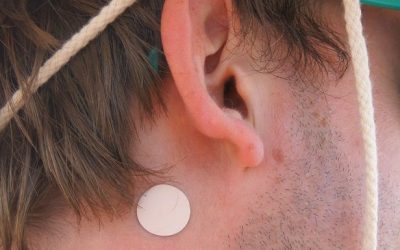A story about physics, chemistry, and the science behind your smartphone
Look at your smartphone. That smooth, glowing screen in your hand is more than a tech marvel—it’s the product of decades of scientific discovery. It’s easy to think of smartphones as high-tech gadgets dreamed up in Silicon Valley, but their core technologies were built on breakthroughs made by scientists in physics labs, chemistry classrooms, and research centers all around the world.
1. The Touchscreen: A Matter of Materials and Electric Fields
The glass you tap on isn’t ordinary glass. It’s a special material that conducts electricity while staying clear. The science behind it involves understanding how electric fields behave on the surface of materials.
By studying the flow of electrical charge through ultra-thin coatings on glass, researchers laid the groundwork for capacitive touchscreens—the kind that sense your fingers without needing pressure. Today’s swipe and tap gestures wouldn’t be possible without this deep dive into the physics of materials.
2. The Microchip: From Electrons to Billions of Switches
Inside every smartphone are tiny electrical switches called transistors, packed by the billions onto microchips smaller than a postage stamp. These wouldn’t exist without breakthroughs in semiconductor physics—specifically, how certain materials can control the flow of electrons.
This work came from quantum physics and solid-state science, fields that started with basic questions about how atoms and particles behave. The answers eventually led to entire computers—shrunk down to fit in your pocket.
3. GPS: Time, Space, and Satellites
Your phone knows where you are thanks to signals from satellites orbiting Earth. But to get precise coordinates, it also needs to account for something that sounds like science fiction: the fact that time moves differently in space than it does on Earth.
That’s a real effect, and it was predicted by theories in relativity and gravity. Without those calculations built into GPS systems, your phone’s location would be off by miles. Once again, it was science—not apps—that made pinpoint navigation possible.
4. Batteries: Compact Chemistry in Action
None of this would work without a reliable power source. The compact, rechargeable batteries in your phone are the result of decades of work in electrochemistry and materials science.
Researchers figured out how to move ions safely and efficiently inside tightly packed cells—creating long-lasting batteries that could power your phone for hours without overheating or wearing out quickly. They also engineered materials that could store energy in smaller and smaller spaces.
5. Wireless Connections: From Equations to Everyday
When your phone connects to the internet or sends a message, it’s using invisible waves and an enormous body of scientific knowledge. Radio wave behavior, signal processing, and digital information theory all play a role in making wireless communication possible.
These ideas weren’t developed for phones—they began as answers to abstract questions about how to send messages, store data, and manage interference. But over time, they evolved into the backbone of our global communications.
Science As the Bridge from Here to There
Smartphones didn’t just appear out of giant tech corporations. They are built on a foundation of pure scientific curiosity—the kind that asks, “What if?” and “How does this work?” Long before there were tech companies, there were researchers studying how electrons move, how light travels, how atoms interact, and how to turn knowledge into tools.
Your smartphone is a modern marvel, but at its core, it’s the result of science—decades of it, layered together like the components inside the phone itself.




